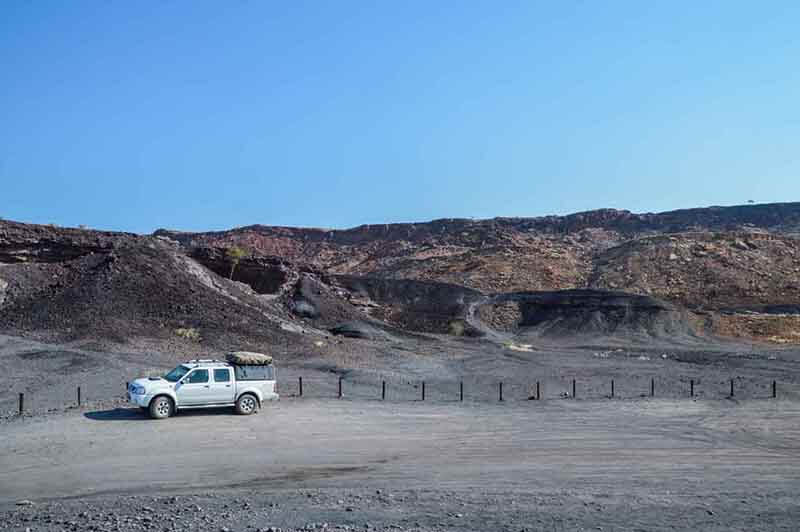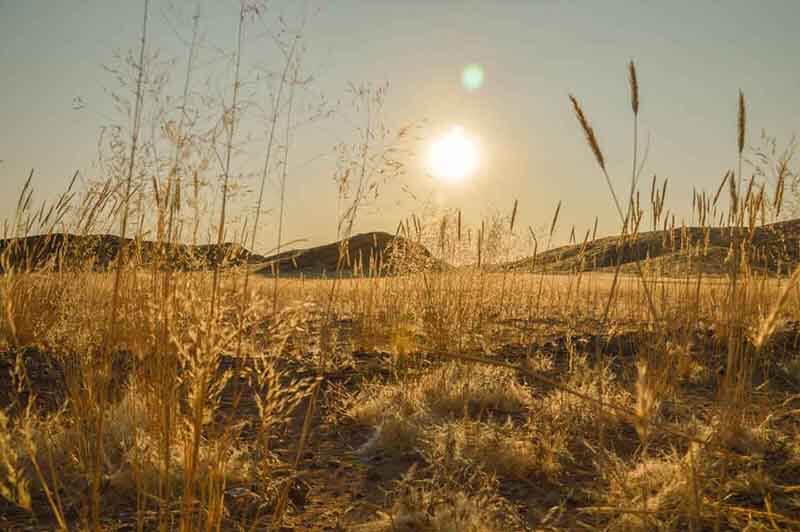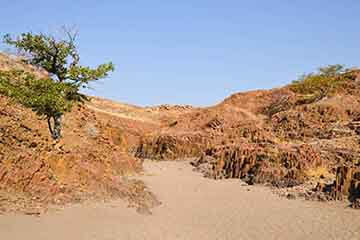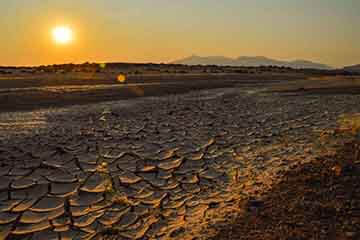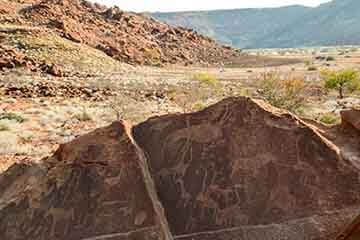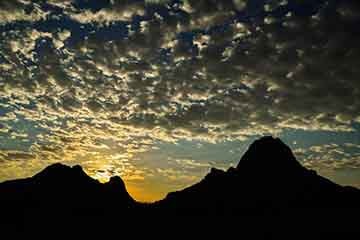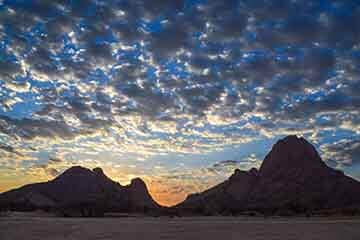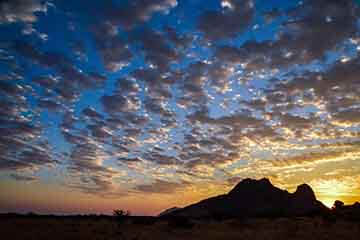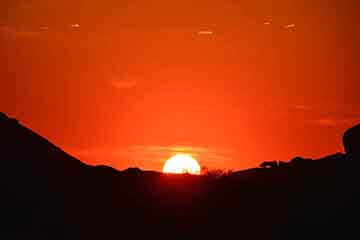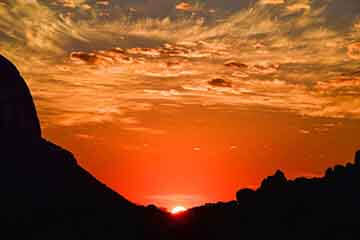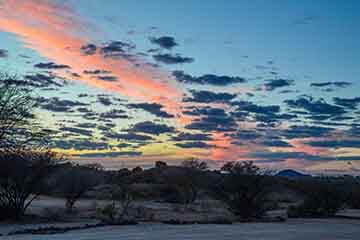Namibia
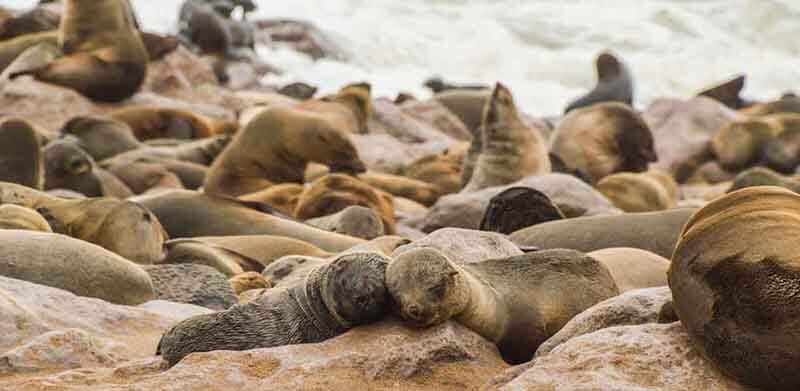 Considering a holiday in Namibia? Then you’ll want to know more about it…
Considering a holiday in Namibia? Then you’ll want to know more about it…
Namibia is calm and serene. With only 2,3 million people in an area of 825 000 square KM, it is the second most sparsely populated country (behind Mongolia). Naturally, many of us locals enjoy the outdoors, and love to chat to visitors. Everything we do, we do with a smile. When entering new areas, say hello to everyone present, be friendly and polite. Our capital city, Windhoek, has been voted Africa’s cleanest city five years in a row.
Geography
Namibia has five rivers that flow all year round. The rivers run along the borders of the country. These rivers are the Zambezi, Chobe, Kavango, Kunene and the Orange in the South. The coastal interior is the Namib desert, a cool coastal desert that runs the entire length of the coast line. It runs eastwards for around 200km until it reaches the high lying interior strip. To the east is the Kalahari Desert and the Caprivi strip that runs all the way to Victoria falls along the border with Angola. This is a game viewing and birding paradise. The Tiger fish grow large and in the low water season, prize winning fish can be caught.
Weather
The weather reaches high temperatures in the Summer, particularly in the deserts and in Etosha. It rains most frequently from February to May, bringing a welcome relief to the heat. During winter, temperatures hover around the low 20s during the days. Night times are very cold, and we recommend packing warm clothing if you plan to visit. There is not much cloudy weather in winter, and as such the towns of Mariental and Keetmanshoop receive the second and third highest amount of sunshine annually across the planet.
Water
Municipal water in Namibia is generally good, though outside of Windhoek, the water that is available is usually from a borehole. Bottled water is available everywhere as well. Ensure you have packed a sufficient amount of water before driving into the desert.
Electricity
Electricity sockets have an output of 220 volts. Ensure you have the appropriate adapters, converters and power supplies. Also consider bringing a solar charger if you use your devices frequently and pack extra batteries. Many of the camps and lodges use generators, though this is not always a guarantee.
Roads and Transport
Only 20% of our roads are tarred, the rest are sand roads and they could be in any state depending on the rain. Leave a few hours early to ensure you complete your daily drive, keeping your speed under 80km/hour on sand roads. Driving at high speeds can be dangerous as you have very little control over your vehicle.
Public transport is available in Namibia, primarily in the form of Taxi’s and shuttle buses. These are affordable but can be cramped from time to time. Bus services are available, running to Windhoek from Gaborone, Vic Falls, Cape Town and Johannesburg. There is no public transport from the Hosea Kutako airport which is 45km away from Windhoek, so you will need to book a shuttle with your accommodation or online. There are a few shuttle companies. Their drivers do not speed and have air conditioning in their vehicles. Their routes go between Windhoek and Swakopmund/Walvis Bay. We can book shuttles on your behalf. Contact us to find out more. If you are driving, then be watchful of pedestrians in towns and local wildlife. Warthogs, Kudu, Antelope and even Elephants often wander into roads unknowingly.
Petrol stations
Petrol stations are in all the major cities. Once you head into the desert, there are only a few places like Solitaire and Sesriem where you can fill up. Diesel is more widely available than petrol.
Currency
The currency used here is the Namibian Dollar (N$), it is equal in value to the South Africa Rand. If you want to exchange your currency to the local one, it is advisable to do it upon arrival at the airport or when you are in Windhoek or Swakopmund. Elsewhere will likely have commission charged.
Tips & taxes
It is common to tip waitpersons, petrol attendants, porters and guides. A 10% tip is the norm in restaurants and N$5 to N$10 tip per bag for porters. VAT is 15%, you can claim it back on departure for goods bought while in Namibia, you will be asked to present a receipt and may need to present the goods in question. You cannot claim for accommodation bills or services.
Language
The official language in Namibia is English, though Oshiwambo, Afrikaans, Nama, Damara, Otjiherero, German and others are widely spoken too. Our major ethnic groups are Owambo, Herero, Nama, Damara, German, Afrikaners and more.
Post
If you want to receive post or parcels while in Namibia, we recommend you use a courier service. It can take a long while for it to get here through the local postal service.
Internet
Internet is widely available in cities while only roaming is available in other parts. Most lodges and camp sites have internet available.
Clinics and Hospitals
Clinics are available in the towns and cities and there are hospitals in Windhoek and Swakopmund/Walvis Bay. Private hospitals have better care so having travel insurance is advisable.
Namibia is a beautiful country. Remember to drive slow and witness the amazing landscapes and vistas. Wherever you are in Namibia, you’ll always have an exquisite view. This country touches your heart and soul. You will often find yourself stopping to take pictures and admire your surroundings.
A holiday here is the whole package, and everything this country has to offer is worth it. Visit Namibia and let your soul breathe.
